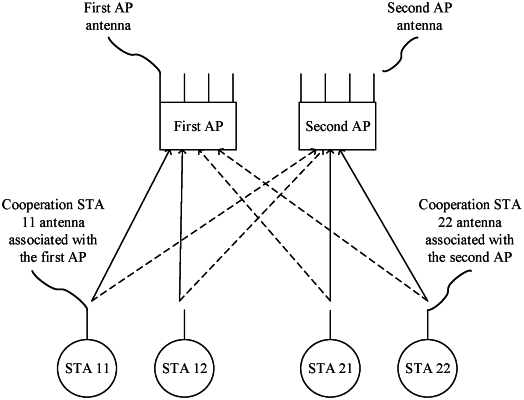| CPC H04W 72/046 (2013.01) [H04L 1/0003 (2013.01); H04W 72/0446 (2013.01); H04W 76/11 (2018.02); H04W 80/02 (2013.01)] | 20 Claims |

|
1. A data transmission method implemented by a first access point (AP) and comprising:
receiving cooperation configuration information from a second AP, wherein the cooperation configuration information indicates basic cooperation information of the second AP to the first AP, and wherein the cooperation configuration information comprises a second quantity of spatial streams allocated by the second AP to a second cooperation station (STA) associated with the second AP;
sending, based on the cooperation configuration information and using a frame format of multi-user (MU) physical layer protocol data unit (PPDU), first information to a first cooperation STA associated with the first AP and the second cooperation STA associated with the second AP, wherein the first information is sent in parallel with similar information of the second AP to the first STA and the second STA; and
allocating a first quantity of spatial streams to the first cooperation STA or to the first cooperation STA and the second cooperation STA based on a condition that a sum of the first quantity of spatial streams and the second quantity of spatial streams does not exceed a smaller value between a first upper limit of a third quantity of received spatial streams of the first AP and a second upper limit of a fourth quantity of received spatial streams of the second AP.
|